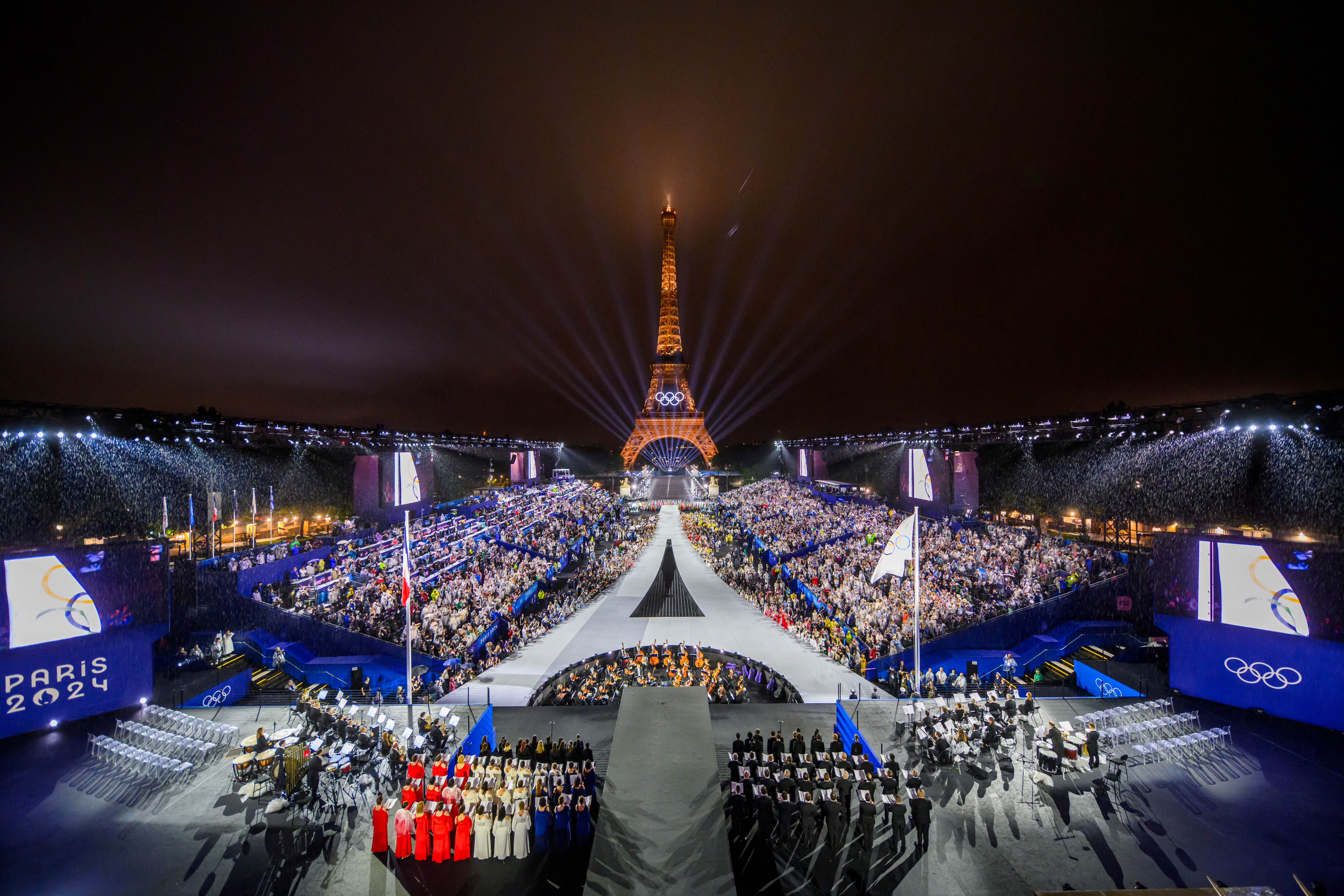The much-anticipated 2024 Summer Olympic Games officially kicked off on July 27 (GMT+8 time) with a stunning and mesmerizing fluvial Opening Ceremony in the historic city of Paris, France.
This marks the third time Paris has hosted the Olympic Games with previous editions occurring in 1900 and 1924. This also marks the centenary of Paris 1924. For the first time in the history of the Olympic Summer Games, the opening ceremony was not held in an Olympic Stadium, instead, it was held on the Seine River, the French capital's main river.
The Philippines is represented by 22 athletes in this global sporting event. These athletes will be competing across nine different sports, including athletics, boxing, fencing, gymnastics, golf, judo, rowing, swimming, and weightlifting.
The opening ceremony began with a striking visual display of the French national colors. Lady Gaga set the stage with a rendition of Zizi Jeanmaire's 'Mon Truc En Plumes' (My Thing with Feathers) on a set of stairs along the river. A visually striking scene unfolded as live cameras followed a mechanical man on horseback floating above a submarine on the Seine river. The submarine carried the mechanical horse as it traversed the waterway.
Once the mechanical horse emerged from the river, a live horse and a person dressed in a shimmering silver robe took their place and processed towards the Trocadéro, with all 206 Olympic delegations following behind them. The silver-robed figure then walked on foot and ceremoniously delivered the Olympic flag, slowly raising it in front of the delegations.
During the Parade of Nations, 206 national delegations cruised in almost 100 boats along the 6 kilometer route. The fluvial parade started at Pont d’Austerlitz (Austerlitz Bridge) passing through the historical and popular landmarks of Paris, including, the Louvre Museum, the Notre Dame de Paris Cathedral, the Esplanade des Invalides, the Grand Palais, and the Place de la Concorde. The parade also passed bridges and gateways including the Pont des Arts and the oldest bridge in Paris, the Pont Neuf.
As the different delegations made their way into the Trocadéro, the spectacle of attires was on full display, showcasing the unique sartorial identities of nations from around the globe.
The Philippine contingent turned heads with their vibrant, intricately designed costume that paid homage to the archipelago's indigenous roots and centuries-old textile craftsmanship. Nesthy Petecio and Carlo Paalam, two Filipino medalists from the 2020 Tokyo Olympics, carried the Philippine flag during the opening ceremonies.
The entire Philippine contingent wore Barong Tagalog attire specially designed by renowned Filipino fashion designer Francis Libiran, dubbed as the "Sinag Barong" collection which takes inspiration from the colors and symbolism of the Philippine flag. The key design elements included a detachable silk organdy sling in blue and red that draped over the left shoulder and upper arm, wrapping around the torso. Additionally, the chest featured an intricate pattern of yellow sun rays, evoking the sun from the Philippine flag. The Barong Tagalog was crafted from a blend of piña (pineapple) and ‘jusi’ fabrics, while the overall design incorporated patterns inspired by the traditional body art of the Pintados warriors.
Other delegations from around the world also exhibited their dazzling and juxtaposed attires, like South Korea’s Musinsa Standard, Chinese Taipei's Fitted Blue-gray Suits, Haiti's Woven Chambray Shirt, Mongolia's Nature and Culture inspired attire, India's Ceremonial Dress, Spain's Carnation inspired attire, Malaysia's The Malaya, and USA's Snappy Tailored Navy Blazers and Blue Jeans designed by Ralph Lauren.
One of the highlights of the Parade of Nations was NBA Legend and Los Angeles Lakers player LeBron James and tennis star player Coco Grauff as Team USA's flag-bearers. This makes LeBron the first men’s basketball player to receive the honor.
International Olympic Committee (IOC) President Thomas Bach addressed the athletes and the crowd in the closing speeches while the French president Emmanuel Macron declared the 'Games Open'.
French football icon Zinedine Zidane was the first to carry the Olympic torch as part of the cauldron lighting ceremony. He then passed the torch to Spanish tennis great Rafael Nadal who was accompanied by a distinguished group of sporting icons, including American tennis legend Serena Williams, Romanian gymnastics great Nadia Comaneci, and American track and field legend Carl Lewis.
The four then passed the Olympic torch to French tennis legend Amélie Mauresmo, who subsequently handed it off to French basketball star Tony Parker at the Tuileries Garden. The ceremony also paid tribute to France's Paralympic athletes, with additional French legends highlighted during the torch relay.
The final Olympic torch was carried by Charles Coste, the oldest living French medalist, who entrusted it to French judo champion Teddy Riner and French track and field sprinter Marie-José Pérec. The remarkable torch journey culminated with Riner and Pérec igniting the cauldron, which was situated atop a massive hot air balloon, honoring the pioneering hydrogen balloon flights of Joseph-Michel and Jacques-Étienne Montgolfier.
The parade stopped at Pont d'Iéna before the opening ceremony's finale at Jardins du Trocadéro (Trocadéro Gardens) at the foot of the Eiffel Tower.
Canadian singer Celine Dion concluded the ceremony with a soulful performance of French icon Edith Paif’s “Hymne à l’amour” (Hymn of Love).
The 2024 Paris Olympics will run until August 11. The Philippines seeks to surpass its commendable medal haul from the 2020 Tokyo Olympics where the country bagged its first gold, two silvers, and one bronze – its best performance so far in the world sporting event.


